Note
You're definitely gonna cover the expansive galaxy express series eventually right? 👀👀👀
Eventually. Being a college student is hard, and I haven’t had a lot of time recently, but I’ll get around to it.
0 notes
Text
12 Days of Rail Wars!: Episode 12 Everyone’s Waiting
My goodness how time has flown! It’s already day 12! I’d like to thank everyone who has gone with me on this ride. It brings me joy every time I see a notification that someone liked or re-blogged these posts. The thought that something I made entertained someone, or just relieved their boredom, for a few minutes fills me with such a warm feeling. Once again thank you. It is likely that I’ll be sporadic in my posts after this. There are so many new shows coming out and so little time. Anyways, to get back on track, our final station today is Episode 12. Doors will open on the right.
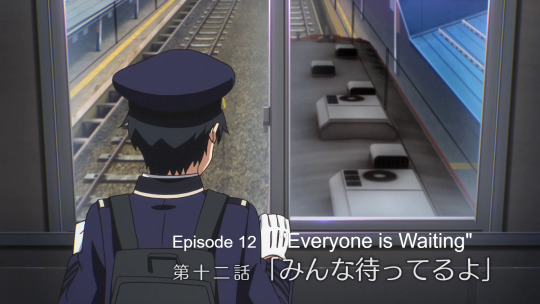
After the events on the Hokutosei, Takayama and Iida are on their return trip back to Tokyo. Shortly after leaving Aomori station, Takayama hears a strange noise coming from the engine.

The train that Iida and Takayama take from Aomori to Tokyo is a Kiha Class 381.
The Kiha that is shown in Rail Wars! is a diesel electric locomotive that doesn’t rely on overhead wires for energy. In reality, the Kiha 381 is an electric locomotive that operates with a pantograph.

It is memorable because it was one of the first model production train to include a tilting balance system. This system counters the centripetal force that acts on the train when cornering. This allows the Kiha to take curves much faster than other locomotives. Unfortunately, when the system was first unveiled, computer controlled tilting wasn’t available, and many passengers got motion sickness. So many, in fact, that motion sickness bags became a standard amenity in the Kiha 381, until the issue was fixed.
The 381 class began use as limited express trains in 1973, and are still in use today. There are also two preserved models available for observation in the SCMaglev and Railway Park in Nagoya.
0 notes
Text
12 Days of Rail Wars!: Episode 11 I’ll Go With You
Aoi arrives just in time to save Naoto and Bernina. Unfortunately, while the decoy worked, Haruka has been captured. It’s up to the rest of the 4th Security Team to get her back in the second part of this arc.

The crew is still on the Hokutosei Limited Express, but I talked about that already. Let’s talk about the engines then. Part of the line that the Hokutosei travels is unelectrified, so a diesel locomotive takes over and pulls the train. Unelectrified sections of line, while not uncommon in rural areas, are still rather uncommon overall in JRs rail network. Today we will be talking about the JR Class DD51 locomotive.
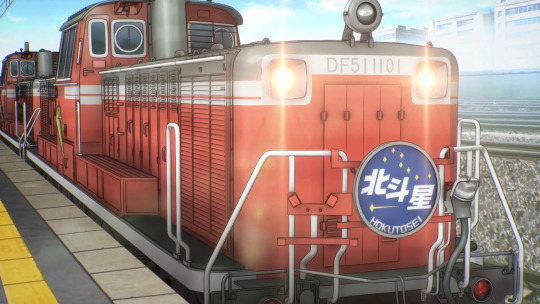
The DD51 is a class of diesel electric locomotives, with 649 of them built between 1962-1978. It is a Diesel (D) Locomotive with four driving axels (D) that operates at speeds above 85 km/h (51). Each locomotive puts out 2,200 horsepower and has a max speed of 95 km/h.

In addition to being used for the Hokutosei, DD51 locomotives are used by JR Freight to transport freight, and DD51 842 was designated as the imperial train locomotive.

Unlike many of the trains featured during the 12 days of Rail Wars, the DD51 class still has units in operation. As of April 1, 2016, 29 units still being used between JR East, JR West, and JR Freight. In addition, there are seven units that have been preserved and put on display.
0 notes
Text
12 Days of Rail Wars!: Episode 10 Please Keep This a Secret
Prince Bernina from the country of Atella has come to visit, and it is up to K4 to be his guards. Unfortunately, there are some people on the train that would rather have the prince not be a passenger…
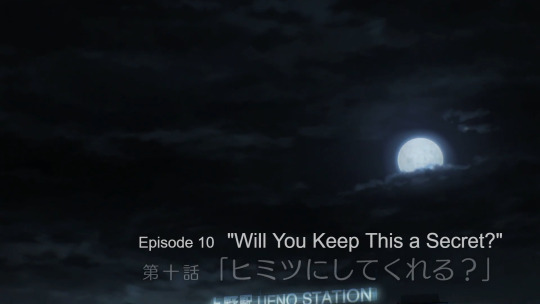

The train that K4 and the Prince are riding is the Hokutosei Limited Express. Named after the Big Dipper Constellation, this train began operation in 1988 and traveled from Ueno Station in Tokyo, to Sapporo Station in Hokkaido, an approximately 16.5-hour trip.

Due to the long nature of the journey, the Hokutosei offers sleeping accommodations. There are two kinds of sleeper cars, type “A” and type “B”. Type A rooms were larger and had more amenities, like personal showers and a table and chair set. The Type B rooms were smaller and usually just had sleeping accommodations.
The Hokutosei also had a dining and lounge car. If you wanted to eat dinner, you would have to make a reservation ahead of time, but after dinnertime, Pub Time begins. During Pub Time, one can get a la carte items and alcoholic beverages. The dining car also served breakfast.
The Hokutosei used to be the fastest train up to Hokkaido, but with the introduction on the Hokkiado Shinkansen in 2015, the Hokutosei service was discontinued. But fear not. If you still want to experience sleeping on the Hokutosei, there is a hostel in the Chuo ward of Tokyo called “Train Hostel Hokutosei” that is built using the bunks and fittings from the sleeper cars.
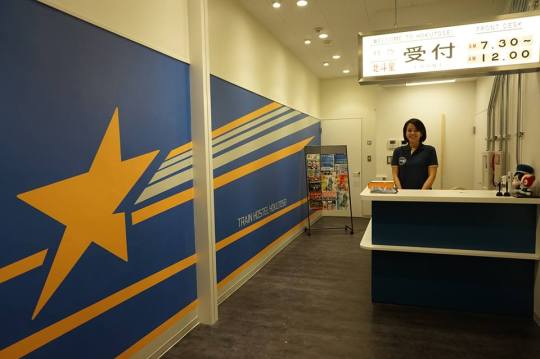
1 note
·
View note
Text
12 Days of Rail Wars!: Episode 9 Thank You
Our three part story arc comes to an end. But before the happy ending to the drama, the team must first get though the old track that has many hazards in store.
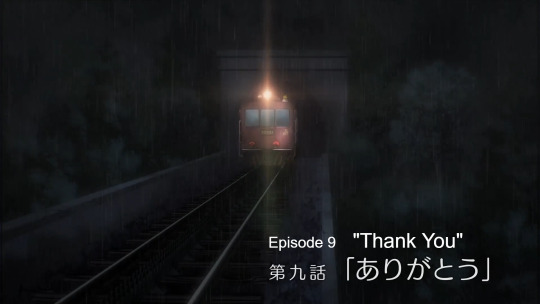
The setting of this arc is Usui Pass, one of the steepest slopes in the JR network. The mountain pass also has a road running through it, which funnily enough, was featured in Initial D. But we don’t care about cars here unless they are railcars.
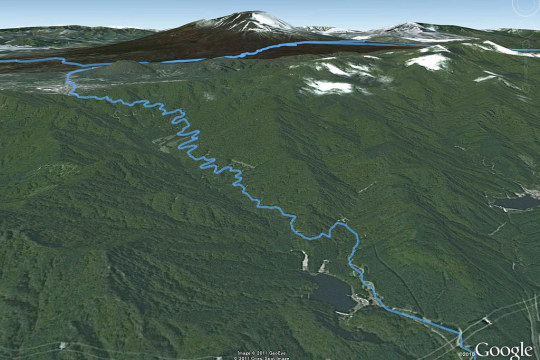
Usui Pass is a part of the Shin’etsu Main Line. The 11.2 km section that runs through the pass is operated using the cog and pinion system, which has a third toothed “rail” in between the two regular rails. It opened in 1893.
The pass has a grading of 66 meters of vertical change for every 1000 meters of horizontal movement, or 6.6%. This may not seem steep, but to put in perspective, if the Usui Pass section was a regular friction railway, it would be the 9th steepest friction railway in the world. In 1963, the cog and pinion system was replaced with non-racked rails and new engines designed to run the pass, the EF63. Operated first by JNR and then JR east, the route was finallyclosed in 1997 when the Nagano Shinkansen bypassed the area by running through a long tunnel.
0 notes
Text
12 Days of Rail Wars!: Episode 8 I’ll Deliver It
Part two of our three-episode story arc. Heavy rains cause a landslide, closing the main line. A transplant organ needs to be delivered, and the 4th Guard Team members are the only ones for the job.
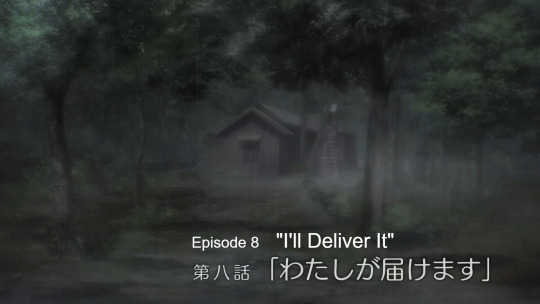

In this episode, we are introduced to the EB 421. It is a railbike, a small unit that travels on the rails. This particular model has a dynamic brake and is powered by pedaling a stationary bicycle apparatus.
There are two types of these auxiliary rail vehicles, powered and unpowered. In the United States, where I live, the powered kinds are called speeders and road-rail vehicles, and the unpowered types are known generally as handcarts or railcarts.
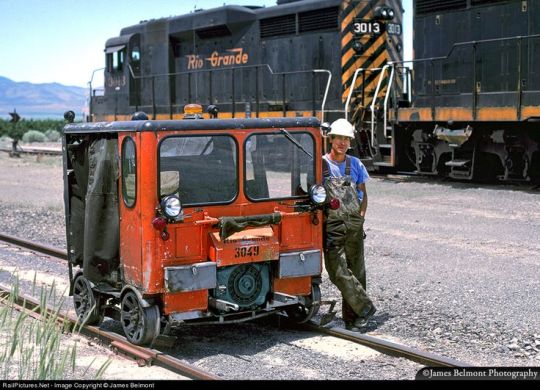
Most speeders and road-rail vehicles are used by railroad staff to run track inspections, and as a fast way to move around materials for infrastructure maintenance. They can range in size and design, some being very minimal; with just a frame, wheels, and control set, and others just be regular automobiles, but with the wheels swapped over to train wheels. Their small size compared to locomotives usually means increased speed.

Handcarts and railbikes can still be used commercially, but they are also used recreationally. The light weight of the human powered versions allows rail enthusiast to pick them up and move them from track to track. People use their own personal rail bikes to explore unused track sections, and some places offer tours that can be taken by railbike.

These auxiliary vehicles also have their own military history. Like their larger cousin, the armored train, some speeders were outfitted with armor and weapons. They served as scouting units, and as track patrols.
0 notes
Text
12 Days of Rail Wars!: Episode 7 I Thought it Suited You
Episode 7 of Rail Wars starts us off with the beginning of a multi-episode story arc! Crazy!
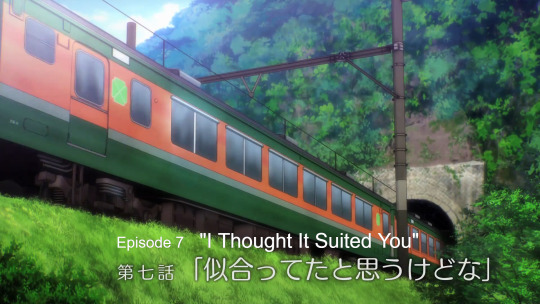
The 4th Security Team heads off to Karuizawa to take part in “Advanced Railway Security Force Training”. It is revealed that Naoto wants to work as an engineer and not as railway security. Drama happens.

Takayama expects to drive an EF63, but is instead assigned to operate an ED42. The focus of today’s episode is the ED42 locomotive.

Based on the 41-type engine from Switzerland, the ED42 is an electric locomotive (E) with four axles (D) that operates on a rack railway (42). 28 of them were manufactured between 1934 until 1948, with mass production beginning with the construction of unit 5. It ran on DC power and had two ways of collecting it. When in the rail-yard, it was powered by its overhead pantograph. Once on the open rails, two conducting shoes on the bottom of the locomotive collected electricity. From number 5 afterwards, the locomotive contained a regenerative braking system that would reduce the amount of electricity drawn from the third rail by up to 30%.
During World War 2, a number changes were made to the design. The body was simplified and the thickness of the outer plating were changed, among other things, to free up resources for the war effort.
The ED42 operated until 1963, when they were replaced by the newer EF63 electric locomotive. Most of the units were scrapped after they became obsolete, but units 1 and 2 are both still around. Unit 2 can be found at Karuizawa Town’s Eastern Elementary School, and Unit 1 can be found at Yokogawa Station.
0 notes
Text
12 Days of Rail Wars!: Episode 6 I’ll Protect You
In this episode, Takayama and Koumi find themselves running from what they believe to be an assassin, but is actually something even scarier: someone trying to sell them insurance.
No trains of note in this episode, but fear not. We here at Anime on Rails discuss more than just MDUs and Steam locomotives. We also talk about other things railroad related.

Our intrepid heroes find themselves in Akihabara’s Transportation Museum. Railroads are an important part of Japan’s transportation history, so let’s learn about the Museum! The Tokyo Transportation Museum is in Akihabara, about a two-minute walk from the train station. It has not only trains, but also planes and boats. With an entry fee of only 310 yen, it is… hmm? Hang on… I’m getting a message here. The museum closed? When? 2007? That was ten years ago! Why am I only hearing about it now? This is outrageous! How dare they! Why on earth would… What? It reopened in Saitama? It’s the Tokyo Railway Museum now? Oh, wait a minute… I’ve been there!! That place was awesome! Excellent! The blog post can now be saved!

Ahem… Apologies for the delay. It appears that we will be talking about the successor to the transportation museum today: The Tokyo Rail Museum. It opened on October 14, 2007 and is run by the non-profit affiliate of JR East, East Japan Railway Culture Foundation. The Museum has over 30 pieces of rolling stock and an operational turntable that has daily demonstrations. There are several exhibits chronicling the history of rail transportation in Japan, including the history of imperial rail cars and freight transportation. All of this can be seen from the second-floor balcony. On the second floor, there is a massive model rail set that gives a 30-minute presentation every other hour and a restaurant that serves food like the fare served on dining cars from the past.
youtube
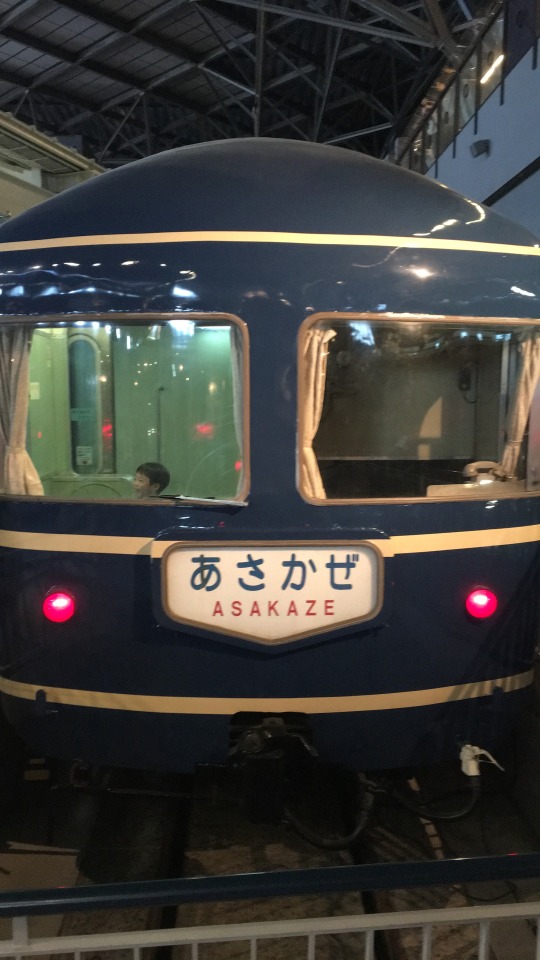
In addition to the artifacts inside the museum, there are also interactive sections outside. For a small fee (200 yen/$2) one can operate a miniature version of some of the trains JR runs, including a mini Shinkansen and Yamanote line engine. These mini trains are built from extra parts of their parent train sets.
youtube
In addition to the artifacts inside the museum, there are also interactive sections outside. For a small fee (200 yen/$2) one can operate a miniature version of some of the trains JR runs, including a mini Shinkansen and Yamanote line engine. These mini trains are built from extra parts of their parent train sets.
To get to the museum, one must take the free tram shuttle from Omiya station to Tetsudo-Hakubutsukan Station. After that it is a brief walk to the Museum. Entry is 1000 yen for an adult, and 500 yen for elementary, middle, and high school students.
0 notes
Text
12 Days of Rail Wars!: Epsiode 5 Don’t Look at Me
In Episode 5, Takayama and Sakurai chase after the Tokyo station bomber’s accomplice.
The featured train in this episode it the KiHa Class 52 Multiple Diesel Unit. We see two different vaieties of livery in this episode: the standard JNR livery (orange and beige), and the “metropolitan” livery (all orange)


There isn’t a whole lot on the internet written about this unit. They were produced for JNR between 1958 and 1966 and where in operation for JNR and JR until 2010. The early designs (type 0) were based on the multipurpose KiHa 20, but the 52s were used in mountainous regions and required two engines. The later variant (type 100) switched from a vertical cylinder engine to a horizontal version of the same model (DMH 17C–>DMH 17H) and was also designed run more quietly.
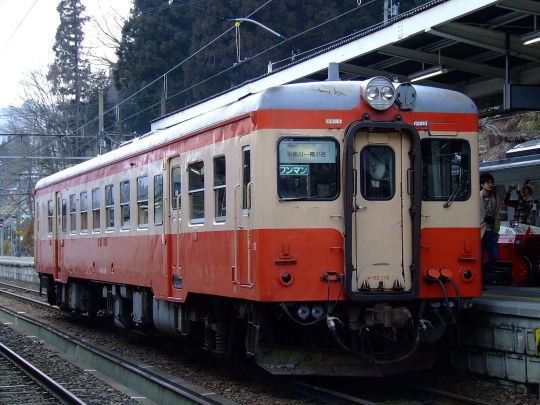
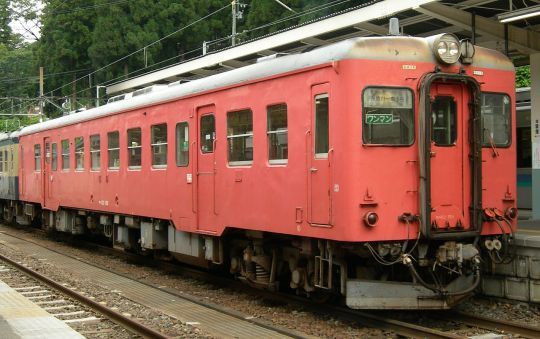
The Kiha 52 was replaced by the Kiha 120 MDU in 2013. There appear to be only four of these units left in Japan, with just one in operation: KiHa 52 125, operated by the Isumi Railway in Chiba.
1 note
·
View note
Text
12 Days of Rail Wars!: Episode 4 I Think I Like It
Episode four is the “obligatory” swimsuit episode. Because how else are we supposed to sell those blu-rays? Anyways, the 4th guard team is assigned as guards for the idol Noa Kashima. Also, swimsuits.

Moving on to the trains!!!
Episode four takes place in Izu, and the group rides one particular train to get there. It is the Odoriko Express.

The Odoriko express (below) runs from Tokyo to the Izu Peninsula and stated operation on October 1, 1981. Its name comes from Yasunari Kawabata’s book Izu no Odoriko, or The Dancing Girl of Izu. It runs 7, 10, and 10+5 car train sets making the second longest express train in Japan after the Shinkansen.

In 1988, shortly after JR was formed out of JNR, a fancier version called the Resort Odoriko (pictured below) began to run. These trains used Izuku Series 2100 trains that had large Panoramic windows in the front cars. As of this post, JR East no longer runs the Resort Odoriko.

On April 28, 1990, JR started the operation of the Super View Odoriko (pictured below). These trains are the fanciest sets to run on this line and have double-decker cars and panoramic windows on both the front and back of the train. This model of the train also includes a children’s play area, so it is recommended for families with small children. In addition to this, the Super View Odoriko has Green rooms that can be reserved. These Green rooms can hold up to four people each and come with a complimentary soft drink and hot towel.

Depending on which train you ride, it costs about between 5600-6000 yen to ride from Tokyo to Izu-Atagawa, a 150-km train ride, so I’d recommend having a JR Rail Pass.
0 notes
Text
12 Days of Rail Wars!: Episode 3 You Were Really Cool
The focus of this episode is train and railway sounds, but as that is an area that is very hard to do internet research in, and I know so little about it that I couldn’t give an explanation that would do the subject justice. So, for today’s article, we are going to briefly talk about the alternate timeline that Rail Wars takes place in, a world where the railroad never stopped being a nationalized company.
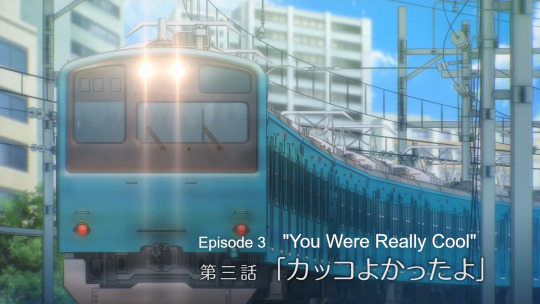
Let’s start at the very beginning, with the opening of the first rail line in the country in 1872. For the next 20 years, private lines would open across the country. The government passed the Railway Construction Act in 1892 that helped subsidize the construction of more rail lines along government specified routes, and the amount of rail in the country grew rapidly.
A number of politicians wanted the rail systems in Japan to be Nationalized, but the government lacked the financial resources to do so after the Satsuma Rebellion, and construction was primarily done by private companies. After the Russo-Japanese War, however, the military voiced dissatisfaction with troop transportation speeds, and attributed the delays in troop movement on the mix between private and government ownership of rail lines. This complaint pushed the government towards nationalizing the railways, and a massive buyout of private companies began. This was welcome move for most rail companies in the country. The ‘big 5’ private railways (Nippon, Sanyo, Kyushu and Kansai Railway companies and the Hokkaido Coal & Railway Co) liked it because when they were operating as private companies, paying dividends to shareholders had taken priority over spending money on infrastructure and maintenance, which would have led to potential liability in the future. Being bought by the government relived them of this obligation to pay out dividends. For smaller companies that didn’t make as much money as the ‘big 5’, the market for selling the government bonds used to finance the buyout was just as good, if not better, than the market for stock in those small companies. There was a second wave of buyouts that occurred during World War 2, further increasing the size of the government’s railway network.
In 1949, General Headquaters directed the Ministry of Transportation, which had operated Japanese Government Railways to reorganize as JNR (Japan National Railways), a state-owned public corporation.
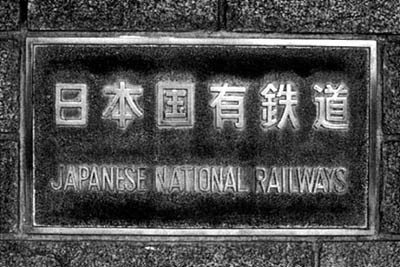
Electrification of the rail lines soon followed, and many lines run by locomotives were replaced with EMUs and DMUs, or Electric Multiple Units and their diesel counterparts. With the explosive growth of the economy in the 60s, the railroads also grew. This Tokaido Shinkansen first started operations in 1964, and the number of limited express and overnight trains grew, marking the golden age of the railway.
As more commuters began using the local train systems to get to work, overcrowding became an issue, and the Japanese government began a campaign in 1964 to quadruple track its most used lines. This was a very expensive move, but it succeeded in improving passenger flow. This is where Rail Wars diverges from our reality.
The combined cost of the shinkansen and track expansion was tremendous and severely increased the company’s debt. Combined with labor disputes between unions and management led to a number of strikes and other issues. With all this weighing the company down, there was a decision to privatize JNR into seven private companies, collectively known as the JR group. There are six passenger rail companies and one freight company. This brings us to the present day.

0 notes
Text
12 Days of Rail Wars!: Episode 2 Let Me Stay Like This for Just a Little While
On the second day of Rail Wars, this AOR gave to me...
In episode 2, the team deals with a bomb threat in Tokyo Station. As it is the location of all the drama, let’s talk about Tokyo Station.

Tokyo Station is located in the Marunouchi business district in the Chiyoda Ward of Tokyo. It is close to the Imperial Palace and, with almost 3,700 trains arriving and departing each day, is the busiest station in the JR network in terms of trains per day. It a terminus for the Tokaido Shinkansen, serves seven JR commuter lines, and also connects to the Tokyo Metro.
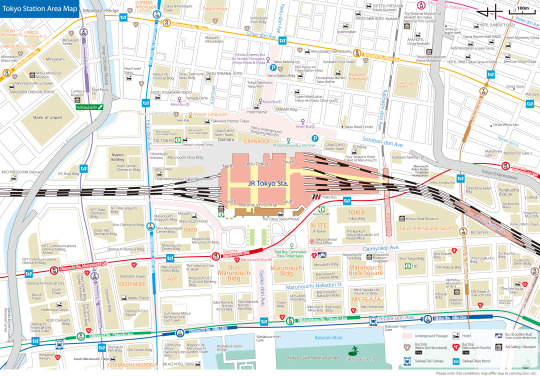
The plans for the station came into being in 1889, and were approved by the Diet in 1896. Construction was delayed due to the first Sino-Japanese War and the Russo-Japanese War, but eventually began in 1908. Tokyo Station opened on December 20, 1914 and began serving two electric lines and two non-electric lines. In 1919, an extension was completed for the addition of the Chuo main line.

World War Two did not treat the station well. Much of it was destroyed in a firebombing raid in 1945. The original rooftop domes were destroyed, and during reconstruction were replaced with shorter, simpler angular rooftops. The Yaesu (east) side of the building was also rebuilt, but burned down again in 1949. In its second reconstruction, it was significantly upgraded and had a department store and an additional two platforms added in 1953. Another two platforms were added in 1964 for the Shinkansen.
There was a plan in 1971 to add a Shinkansen extension to the station that would run to Narita International Airport, but construction and land purchasing issues caused it to be cancelled partway through. The platforms built for the project are now used by the Keiyo and Musashino Lines.
Restoration of the 98-year old historic part of the Marunouchi side of the station to its pre-war condition was completed in October 2012. The angular tops, which were intended to be temporary, were finally replaced with a copy of the original domes. Construction to the Yaesu side of the station, connecting the GranTokyo north and south towers was completed in 2013.
There have been two Prime Ministers assassinated at Tokyo Station. In 1921, Takashi Hara was Stabbed to death, and in 1930 Osachi Hamaguchi was shot and died of his wounds later on.
The Station is like its own city and offers much more than just transportation. There are bakeries, cafes, convenience stores, restaurants,, a gallery, two hotels, three bookstores, and even a shoe repair shop. If you want to go outside, there are a number of places that are within walking distance, including three museums. There is even an easy to navigate English website: http://www.tokyostationcity.com/en/
Oh yeah, It’s also probably going to be where you pick up your Rail Pass when you go and visit. At least, it’s where I got mine.
1 note
·
View note
Text
12 Days of Rail Wars!: Episode 1 Welcome to K4!
Episode 1 begins like your standard anime. We meet our protagonist, Naoto, and the rest of the gang. They get to know each other and a schoolwork/bonding montage ensues. The episode really ramps up in the second half, giving us many different trains to talk about, including a great lesson operating a steam locomotive. But one that sticks out to me the most is the high-speed maintenance train that the crew uses to catch a pair of purse snatchers: Doctor Yellow.

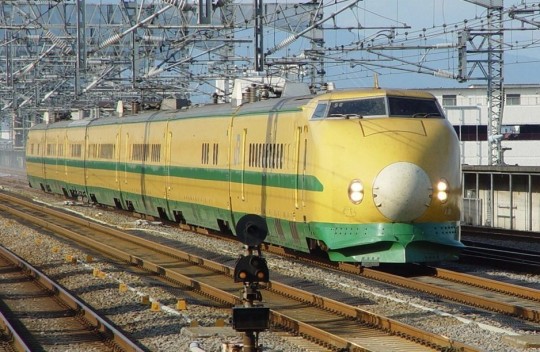
Thousands of trains run on JR’s tracks every year, and all that use means that the system gets its fair share of wear and tear. JR’s rail network is much like a living being, and like any living being, it is subject to routine checkups. Nobody is more qualified to do those checkups than a doctor. Enter Doctor Yellow, the bright yellow maintenance machine, named after said occupation and bright color scheme. The lines that Doctor Yellow inspects are the high-speed rail lines used by the Shinkansen bullet train. To get the most analogous results, the good Doctor is also one of those Shinkansen train sets. Instead of passengers, though, this train carries a multitude of sensors and data recording equipment. Information is collected on almost every part of the line. The overhead wires are checked for breaks or worn out places, the wear on the rails is recorded, the alignment of the rails is compared to the standard width, and the clearance between the wall and the outside of the train is measured. All these are just a few of the types of data recorded by the equipment onboard.
If you want to see an older model of Doctor Yellow, head over to the SCMaglev and Railway Park in Nagoya. They have a massive selection of rolling stock, and their audio guide’s English option is very informative and thorough.
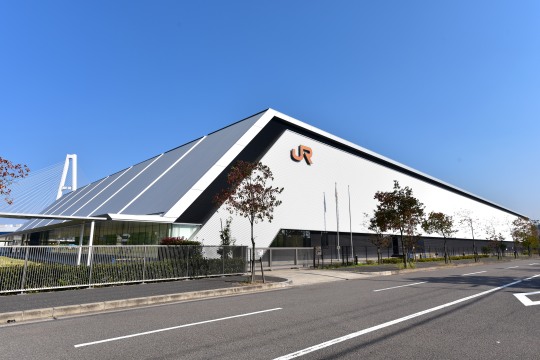
Another member of the railway medical staff who does house calls is Doctor Yellow’s countryside counterpart, Doctor Tokai. Doctor Tokai has many of the same functions and goals as Doctor Yellow, but operates on a smaller scale.
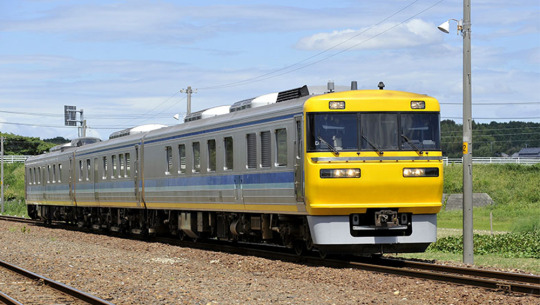
1 note
·
View note
Text
12 Days of Rail Wars!: Intro
Merry Holidays everyone! It’s been while since I last updated (boy, a lot of posts start by saying that), but now that I have been released from the shackles that are final exams, I am back with a vengeance. Today is December 25, 2017, the first day of the 12 days of Christmas. To celebrate this joyous occasion, Anime on Rails will be having its own event. The 12 Days of Rail Wars! There are 12 episodes in the show, so we here at Anime on Rails will be doing one episode per day talking about the various trains and aspects of railroading culture and history presented in the show. But first, let us review of the show as a whole
Rail Wars was the show that first put the idea for this blog into my head. I first watched it in the early days of my anime addiction back in high school. I think I managed to watch the entire show in the course of three weeknights.
Animated by studio Passione, and adapted from a light novel series of the same name, Rail Wars! takes place in an alternate timeline where JR, Japan Railways Group, was never privatized. Naoto Takayama want to be an employee of JNR and participates in on the job training working as a security force employee. During this time, he will encounter other students such as the athletically gifted Aoi Sakura, the constantly hungry Sho Iwaizumi, and the human encyclopedia Haruka Komi. Together they will work towards surviving their trainee period, all the while taking on purse snatchers, bomb threats, and the looming specter of the extremist “RJ” group who wants to privatize the railway system.

With a title like Rail Wars, one would assume that there is a train involved at least, but this show has trains coming out the wazoo. Many of them are real engines and locomotives taken straight from reality and put into our alternate universe. The show may have a few problems with story and perhaps how faces are drawn, but those are insignificant when compared to sheer quantity of trains and cars presented in the show. In addition to having more trains in it than most American Railroad Museums, the show also teaches you about trains as well. There are exposition scenes where characters explain the naming system of certain locomotives and the history of the engines.
For going above and beyond what is expected of an anime, and by educating its viewers in the ways of railroading, Rail Wars earns a Gold Medal Plus.
0 notes
Text
A Silent Voice 聲の形
I went to the movie theatre today to watch A Silent Voice. I really liked it. Probably more than I enjoyed Your Name. I really do enjoy when anime films get theatre screenings. It makes them feel more important to the rest of the world. It is also fun to see who else watches this stuff, like the elderly couple who sat a few rows behind me.
Directed by Naoko Yamada, and animated by Kyoto Animation, A Silent Voice follows the story of Shoya Ishida, a school bully, and Shoko Nishimiya, a young girl with a hearing disability. Their story begins in sixth grade when Shoko transfers to Shoya's elementary school and quickly finds herself bullied and isolated due to her hearing disability. Years later, the tables turn, and Shoya finds himself alone and friendless. We see Shouya's reunion with Shouko and his honest attempts to redeem himself, all while being continually haunted by the shadows of his past.

Like most films set in the modern day, there are not very many trains. There are scenes that show the characters travelling by train, but unfortunately, no obvious features in these scenes tie them in with any real-life trains. However, I am pleased that these scenes were included. There are a number of shows and films where the transportation scenes are cut out almost completely. The inclusion of commuter trains earns A Silent Voice a Bronze medal.
24 notes
·
View notes
Text
Baccano! バッカーノ!
How’s everyone doing? I’m long overdue for a post, so I thought I’d talk about one of my personal favorite shows. I’m rewatching Baccano! The show turns ten years old this year, and some friends and I are watching it together on a week to week basis.

Originally airing from July to November 2007, Baccano! is directed by Takahiro Omori and is based on a light novel series of the same name. It follows and connects the seemingly random stories occurring in the early 1930s: a mafia gang war, a massacre on a train, and the quest for bottles of the elixir of immortality.
One of Baccano!’s defining elements is its train, The Flying Pussyfoot. The Flying Pussyfoot is an essential part of the story, being the setting of the show for more than a third of its run time. Almost every part of the train is shown off in one way or another, with shots of the dining car showing off elegant interior design, the warm wood paneling in the first-class passenger cars, the simple build of the freight cars, and the scenes where the train flies across screen, showing off its power and grace. As an additional bonus, the ending sequence of the show is the camera moving down a set of train tracks. With such attention to detail and such a marvelous train, Baccano! earns a Gold Medal Plus.

The Flying Pussyfoot is an express train that runs from Chicago to New York City. Its design and purpose is very like another train that ran from Chicago to New York in the early 1900s. It was called The 20th Century Limited and is perhaps one of the most famous and iconic trains in American History.
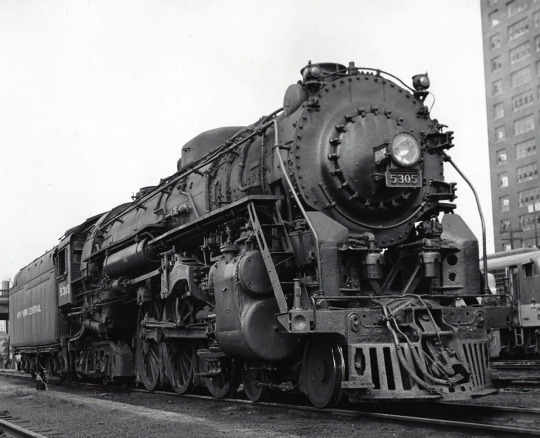
The 20th Century Limited was an express train operated by the New York Central Railroad. Operation started on June 17, 1902 and, offering a dining car, observation car, barber, post office, and secretarial services, it was considered one of the most luxurious and fastest ways to travel. The train had several different incarnations with the most famous being its form in operation from 1938 to 1945.

In 1945, the engines were switched from steam to diesel-electric. This set has had cameos in films like North by Northwest and The Band Wagon.
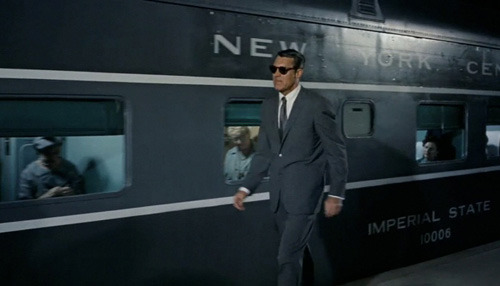
After over 65 years in operation, and with rail travel in decline, the New York Central ended operations of The 20th Century Limited on December 3, 1967.
#baccano!#バッカーノ!#review#gold medal#anime#show#aniplex#takahiro omori#trains#20th century limited#flying pussyfoot#history
10 notes
·
View notes
Text
Lupin III: The Castle of Cagliostro ルパン三世 カリオストロの城
Ah, classic film theater re-screenings, allowing me to watch movies on screens bigger than I could ever afford. Last Tuesday, I went to the movie theater to watch Hayao Miyazki’s film, Lupin III: The Castle of Cagliostro, which was being shown as part of Fathom Events’ “Studio Ghibli Fest 2017″, despite the fact that it came out before Studio Ghibli even existed. This 1979 film was Miyazaki’s directorial debut, and despite underperforming initially at the box office, it is now considered one of the best anime films out there.
After a successful heist leaves them with nothing but a stack of fake money, Arsene Lupin III and his cohorts attempt to rob the one responsible for the counterfeits. During their attempt, he nearly rescues a damsel in distress and learns of a hidden treasure in Cagliostro. Following his failure, Lupin resolves to save her from her captivity.

With the setting being a fake country somewhere in Europe, a continent where railway travel is common, I expected to see at least one train or railway station. Alas, I was thoroughly disappointed. There is not even a whiff of railroading in the film. This earns Lupin III: The Castle of Cagliostro a worthless diamond medal. And while our gentleman thief may like getting a diamond, I am considerably less pleased.
#Lupin III: The Castle of Cagliostro#ルパン三世 カリオストロの城#hayao miyazaki#anime#review#diamond medal#movie#lupin the 3rd
3 notes
·
View notes